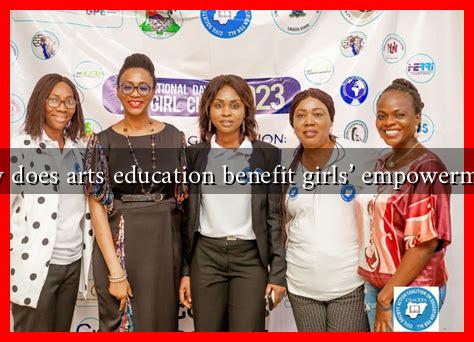-
Table of Contents
How Does Arts Education Benefit Girls’ Empowerment?
Arts education plays a crucial role in shaping the lives of young individuals, particularly girls, by fostering creativity, self-expression, and critical thinking. In a world where gender disparities still exist, empowering girls through arts education can lead to transformative changes in their lives and communities. This article explores the multifaceted benefits of arts education for girls’ empowerment, supported by research, examples, and statistics.
The Importance of Arts Education
Arts education encompasses various disciplines, including visual arts, music, dance, and theater. It provides a platform for students to explore their creativity and express their thoughts and feelings. For girls, this form of education can be particularly impactful for several reasons:
- Encourages Self-Expression: Arts education allows girls to articulate their emotions and experiences, fostering a sense of identity and self-worth.
- Builds Confidence: Participating in artistic activities can enhance self-esteem, as girls learn to present their work and receive feedback.
- Promotes Critical Thinking: Engaging in the arts encourages girls to think critically and solve problems creatively, skills that are essential in all areas of life.
Empowerment Through Creativity
Creativity is a powerful tool for empowerment. When girls engage in arts education, they develop skills that extend beyond the classroom. For instance, a study by the National Endowment for the Arts found that students involved in arts education are more likely to excel academically and participate in community service. This engagement fosters a sense of agency and responsibility, which is vital for empowerment.
Moreover, arts education can serve as a catalyst for social change. Programs like Girls Who Code integrate technology and arts to inspire girls to pursue careers in STEM fields, traditionally dominated by males. By combining creativity with technical skills, girls can break barriers and redefine societal norms.
Case Studies: Success Stories
Numerous organizations and initiatives have successfully harnessed the power of arts education to empower girls. Here are a few notable examples:
- Girl Be Heard: This organization uses theater to empower young women by giving them a platform to share their stories. Participants develop skills in writing, acting, and public speaking, which boosts their confidence and leadership abilities.
- ArtWorks: A community-based program that provides girls with opportunities to engage in visual arts. Participants not only learn artistic techniques but also collaborate on projects that address social issues, fostering a sense of community and activism.
- Girls on the Run: While primarily a running program, it incorporates creative expression through arts and crafts, helping girls build confidence and resilience.
Statistics Highlighting the Impact
Research consistently shows the positive impact of arts education on girls. According to a report by the Arts Education Partnership:
- Students involved in arts education are 4 times more likely to be recognized for academic achievement.
- Girls who participate in arts programs report higher levels of self-esteem and lower levels of anxiety.
- Engagement in the arts is linked to improved social skills and emotional intelligence.
Conclusion: The Path Forward
Arts education is not merely an extracurricular activity; it is a vital component of girls’ empowerment. By fostering creativity, self-expression, and critical thinking, arts education equips girls with the tools they need to navigate challenges and seize opportunities. As we continue to advocate for gender equality, it is essential to recognize the transformative power of the arts in shaping the lives of young women.
Investing in arts education for girls is an investment in a more equitable future. By supporting programs that promote creativity and self-expression, we can help girls become confident leaders and change-makers in their communities. The benefits of arts education extend far beyond the classroom, creating ripples of empowerment that can last a lifetime.

